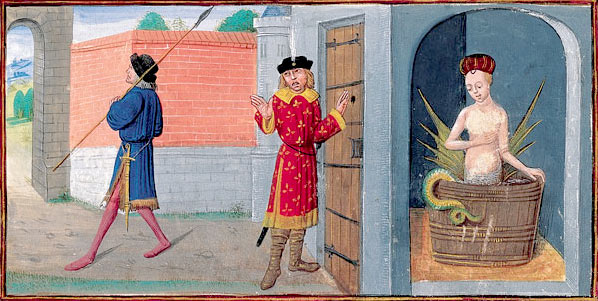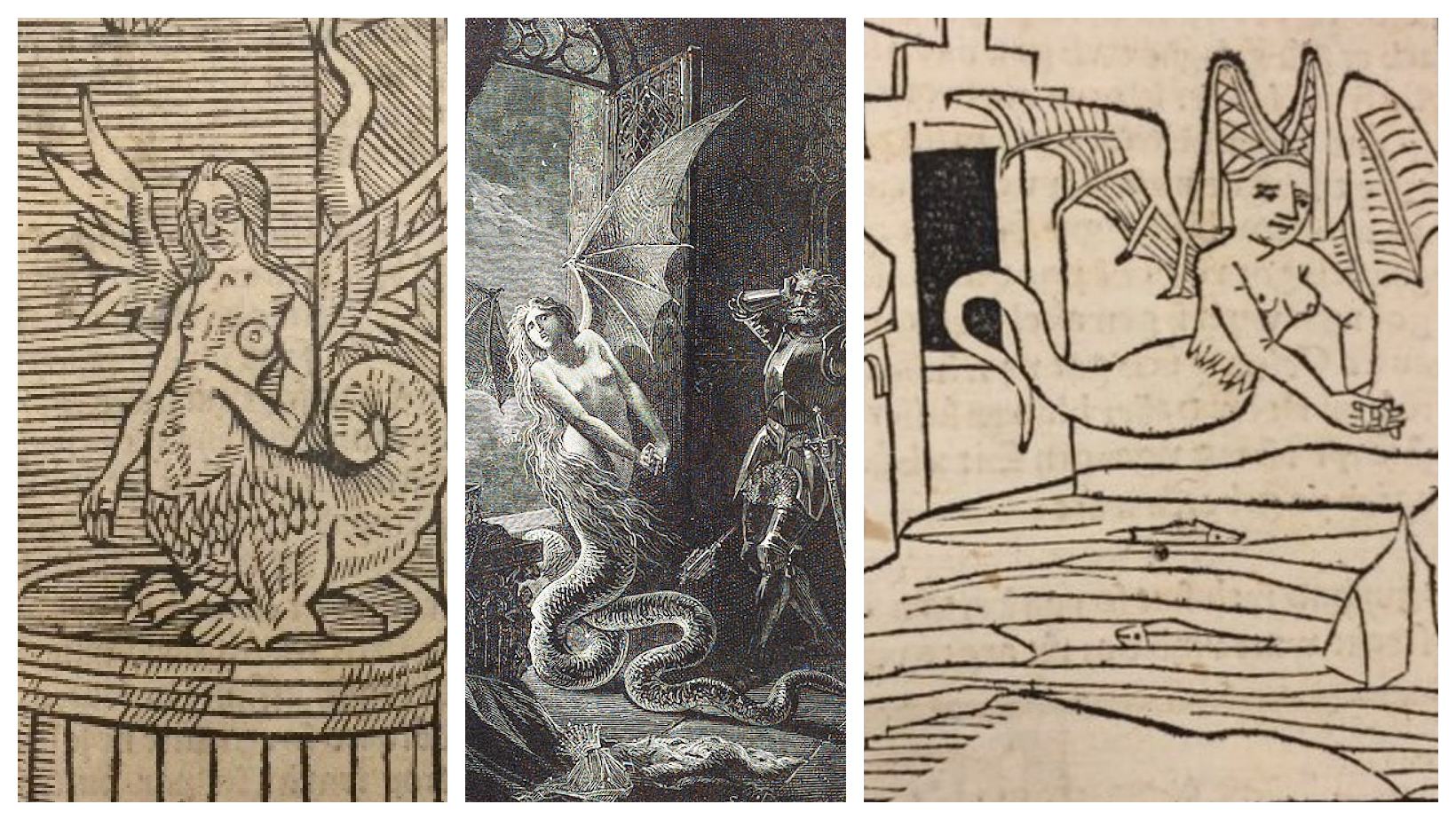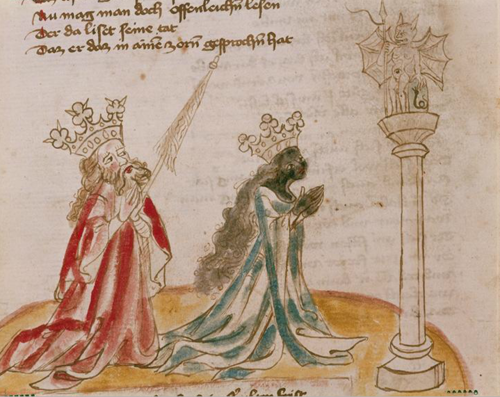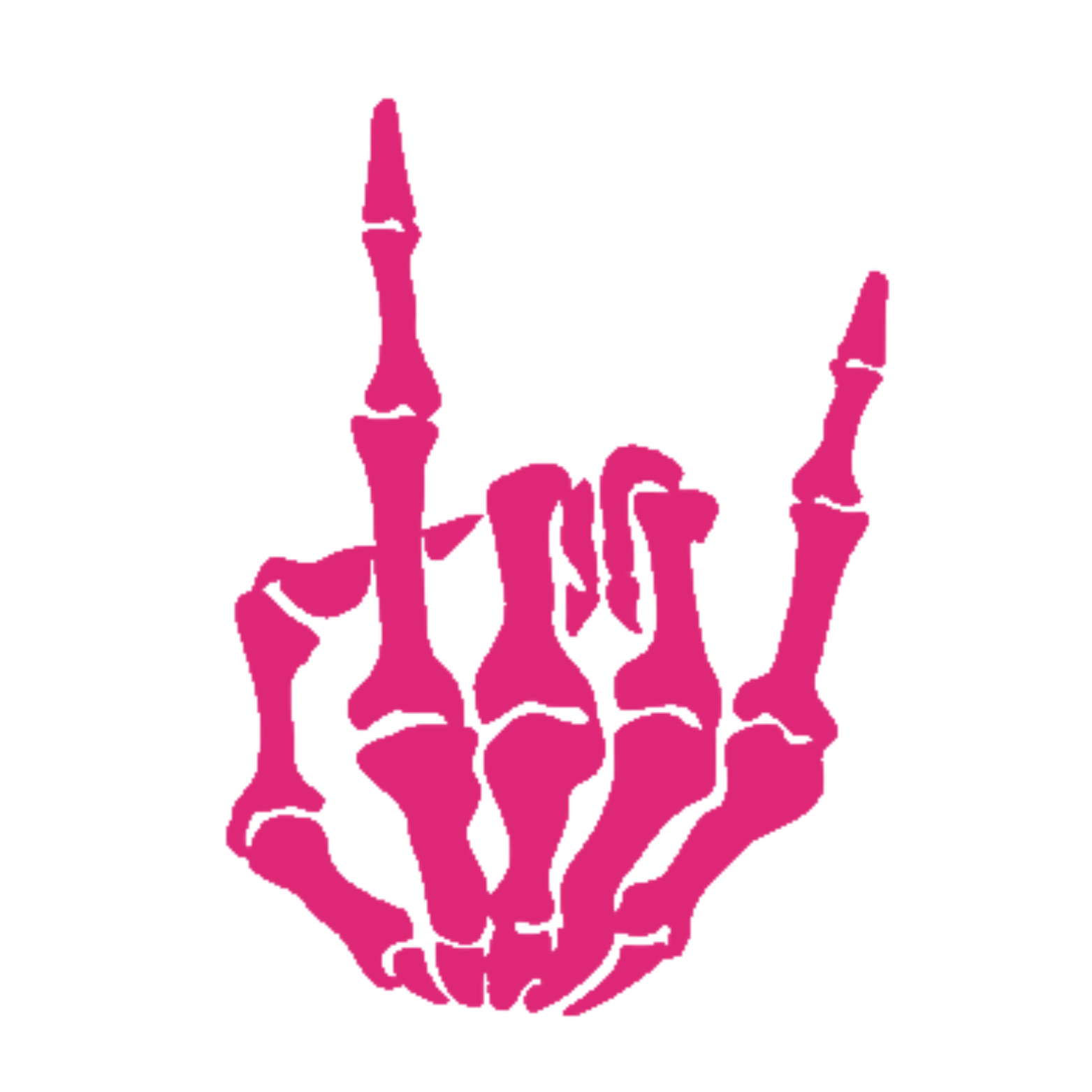13 Days of Baba Yaga: Bird Women, cont'd.
This is Part 2 of an essay that began with this post.
Bertrada of Laon is best remembered for two things: giving birth to Charlemagne and having a goose foot. I thought of her while I was thinking about Baba Yaga and Berehynia and female figures connected with birds. A difference worth noting is that both Baba Yaga and Berehynia are explicitly supernatural, while Bertrada is an example of an exceptional woman who was perceived as not quite fully human.
People who like material explanations for historical mysteries might tell you that Bertrada had a clubfoot, but there is no contemporary evidence for that other than the nickname regina pede aucae (queen with the goose foot). More fanciful folks might tell you that, because she played a significant role in the education of her children and became known as a patron of children, she is the original Mother Goose. This seems just as spurious to me. As long as we’re throwing out uneducated guesses, though, I’ll suggest this: that Bertrada is a sister to Mélusine, another French lady with zoological features. While Mélusine can take the shape of a human woman, when she is immersed in water, she is half-woman, half-dragon (or fully herself?). Jean d’Arras tells us that she married Raymond of Poitou, and she shows up in the family tree of more than one noble family.

I think we can all agree that someone bothering us when we’re trying to relax in the tub sucks. (Illustration from Le Roman de Mélusine by Jean d'Arras, ca 1450–1500)
What’s most interesting to me about these two very different figures is that they both occupy a space that is neither fully animal nor fully human. And, if you know anything about classical conceptions of sex and gender, that is a space occupied by all women. What’s different about Bertrada and Mélusine is that their animality is so obvious and so strange and that both have royal descendants.

Mélusine has had just about enough of your bullshit. (Title page of Mélusine, Paris, 1530; illustration from History of Magic by Emile Bayard, 1870; “Mélusine takes flight,” from Dis ouentürlich buch.(
If you’ve stuck with me this far, perhaps you’ll indulge me as I introduce another royal lady, the Queen of Sheba. A lot of ink has been spilled imagining and interpreting the meeting between the Queen of Sheba and King Solomon. She appears in both Kings and Chronicles and, from there, makes her way into Christian theology, the Quran, and European folklore. Fully engaging with this rich character is, obviously, well beyond the scope of this post. She’s here because, in a variety of different stories, King Solomon tricks her into lifting her skirt to see if she has cloven hooves or—you guessed it—a goose foot. In some stories she has hairy legs which, apparently, are just as bad but sometimes for different reasons.

Illustration of King Solomon, that creeper, and the Queen of Sheba, no goose foot detected, by Hans Vintler, 1411
You’re not going to believe this, but I still have more to say about Baba Yaga. Subscribe and you won’t miss a thing!
Everything I’m talking about right now is way beyond any area of expertise I might claim, and I do not want to reduce Bertrada or Mélusine or the Queen of Sheba to a single meaning, but I’m going to take a stab at synthesizing what these figures, taken together, represent for me.
First, if we focus on Bertrada and the Queen of Sheba especially, we learn that there’s something weird about powerful women, and this weirdness must certainly show itself. The Queen of Sheba was the wise sovereign of a wealthy nation. Bertrada birthed and educated an emperor who valued unity and learning. And even Mélusine defied norms by insisting on boundaries and flying away when her husband violated them.
Second, what these women represent for me is a recognition that we need people who can travel between worlds—between our mundane human world and the natural world and the world of spirit. We need people who can take us between worlds.
As a student of religion and folklore, I see patterns and resonances, but I also try very hard to stay attentive to difference. I am not going to try to tell you that there is some original Bird Goddess from whom these queens and deities descend because I cannot imagine that there is one. I do think, though, that spending some time with Bertrada, Mélusine, and the Queen of Sheba has added depth to my understanding of Baba Yaga as psychopomp, initiatrix, and mother of beasts. I hope that you find this digression helpful, too.
Thank you for reading Croning. All our posts are free for now, so please feel free to share!


Comments ()